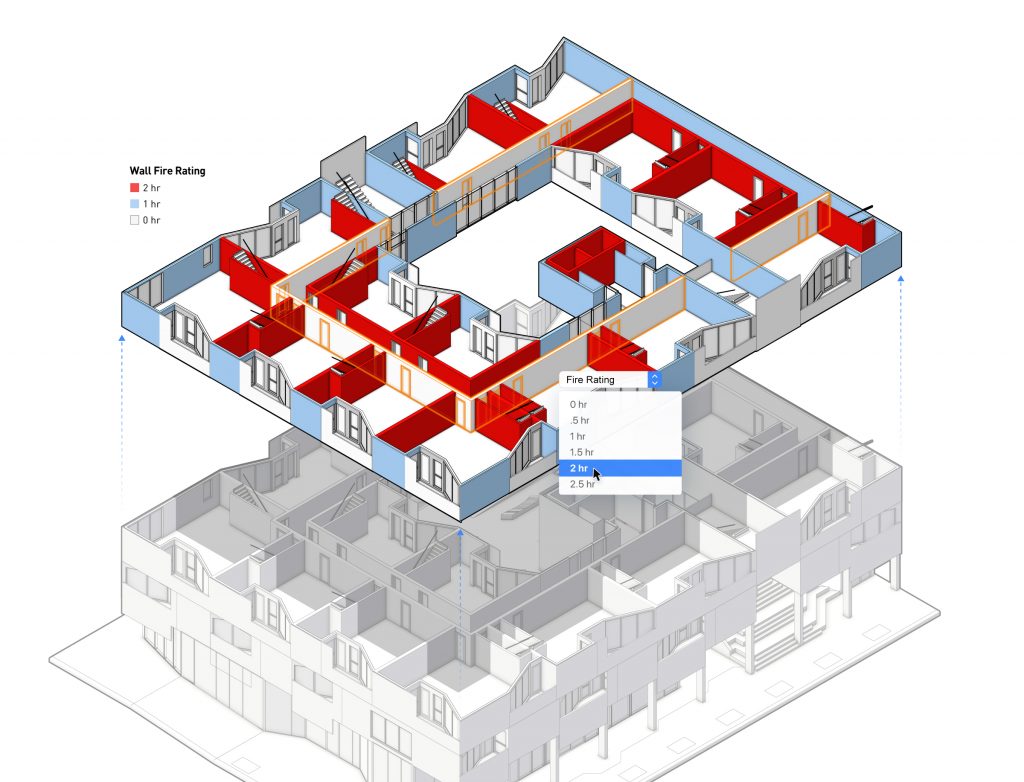In this article, Vectorworks product marketing director and architect Rubina Siddiqui, assoc. AIA, writes about the unique workflows in Vectorworks Architect that enable successful BIM workflows.
This article initially appeared on AECCafe on May 12, 2020.

In the AEC industry, BIM is a powerful process that allows us to effectively coordinate and bring our designs to life. But as architects and design professionals, we need tools that support our workflows through the entire process — this includes the architects’ responsibilityof conceptualization and development of a design idea. Fortunately, Vectorworks is uniquely positioned among other design software tools to do this in one, streamlined workflow without switching between platforms.
Along with tools structured to support project coordination and collaboration, Vectorworks is also a versatile software to help your process from start to finish, letting you to sketch, model, and draw in a fully integrated BIM workflow. Specifically, there are workflows in our software that allow you to conceptualize and optimize your designs for projects — no matter the size. Here’s an in-depth look at two workflows in Vectorworks that stand out from other products in the industry with a focus on modeling and data-driven workflows.
Modeling Workflow
In a previous article by Vectorworks CEO Dr. Biplab Sarkar, he outlined the seven types of modeling such as Vectorworks’ NURBS modeling, surface modeling, solids modeling, and others that bring unique characteristics of modeling and presentation qualities to Vectorworks.
→ Related: Object Creation & 3D Modeling in Vectorworks
Expanding on that concept here, Vectorworks’ modeling capabilities gives you the ability to explore solutions to any given design problem in multiple ways. For example, a dedicated space planning toolset lets you create programmatic bubble diagrams and analyze layout. For massing models, robust data extraction into a worksheet will ensure code compliance for building setbacks and heights.
We continually improve our modeling process to support the iterative process that design is. It’s really all about change management. This, in turn, gives designers more flexibility — especially for more complex situations and challenges. Furthermore, designers will be able to adjust their work to accommodate a client’s needs or brainstorm a better solution where applicable.
Data-Driven Workflow
Editor's note: This article was published to AEC Cafe following the release of Vectorworks 2020. There have been two major Vectorworks releases since then — Vectorworks 2021 and 2022. Here are some links about newer features that expand upon the data-driven workflows Siddiqui covers below. |
The second workflow defines our strength as a BIM tool. Vectorworks 2020 introduced data-driven insights to complement our many BIM offerings. Any object in Vectorworks gives designers valuable information, so they know how to analyze their designs. For example, if I were to draw a cube, that same cube would give me specific information such as the surface area, volume, and its relation to other objects. I could then use this data to accurately analyze and enhance certain aspects of my design to meet the project requirements. This type of information will let me make smarter decisions while also reducing my risk for mistakes.
Vectorworks 2020 introduced top features that were created to help support data-driven workflows. Here’s a closer look at them:
Data Manager
The Data Manager simplifies BIM workflows, allowing you to gather all your data in one place. It is an all-encompassing management system that helps you define data mappings and create data sheets from the same dialog. Plus, you can create custom Data Sheets — a more straightforward way to define which data needs to be attached to different project phases — allowing collaborators to use those same entry points to instantly add their data to the appropriate object.
 Live Data Visualization
Live Data Visualization
Quickly change objects’ graphic attributes using data parameters to view everything from errors to the impacts of your decisions — all while you’re designing. And because it’s in the live design environment, you can edit an object’s data as you’re designing and see the impact of those changes. You will also experience greater efficiency in your process by being able to visualize data for error/quality checking and work validation.

GIS Improvements
The new Geographic Information System (GIS) toolset and integration with Esri’s ArcGIS Online services allow you to accurately geolocate your project by simply entering an address. You can instantly incorporate street map, satellite, or other imagery into your design through ArcGIS and WMS servers.
In addition to these tools, customers can easily share the model or enhance it with all of our import and export options. Notably, to best support those processes, Vectorworks Architect has the largest number of import and export capabilities in the industry. Additionally, we offer the Industry Foundation Classes (IFC) file format, and we were the first to receive IFC4 Export Certification. It’s easier for a designer to include the necessary data for BIM exchange. Our tools make IFC more accessible and easier to execute, so you’re able to speed up open BIM workflows.
These two workflows may seem different, yet they are all tied together and were created to make the overall design process easier. Architectural design is not a one-size-fits-all and BIM workflows shouldn’t be either. From the first sketch to a fully coordinated BIM model, it is crucial to ensure project success for the designer and other project team members.Watch the Vectorworks Architect team discuss the power of BIM with Vectorworks
By improving current tools and adding new ones, we’ve created a continuous process for the project lifecycle. We’re constantly updating and improving our software to ensure the most innovative, versatile, and efficient tools are made available to designers. To help ensure that our customers are benefitting from all of these changes, we’ve created Vectorworks University, a great repository tool to help with learning and training.
With Vectorworks’ data-driven design workflow, you’re able to develop your design solutions, improve collaboration with other colleagues, and execute your projects in a more structured way. For a closer look at how this is possible, see how these large firms used Vectorworks to contribute to their success in these Big BIM projects.
About the Author
Rubina Siddiqui, Assoc. AIA, uses her knowledge of BIM and her architectural experience to work with designers and understand their needs and goals. She demonstrates how BIM workflows can benefit projects by communicating how interoperability and collaboration with all parties in the design process improves with Open BIM. In her role as product marketing director at Vectorworks, Inc., Siddiqui supports the product development, sales, and marketing teams, and creates resources to help designers achieve success with Vectorworks software. She earned a bachelor’s degree in geology and earth science from George Washington University and a master’s degree in architecture from the University of Tennessee.





